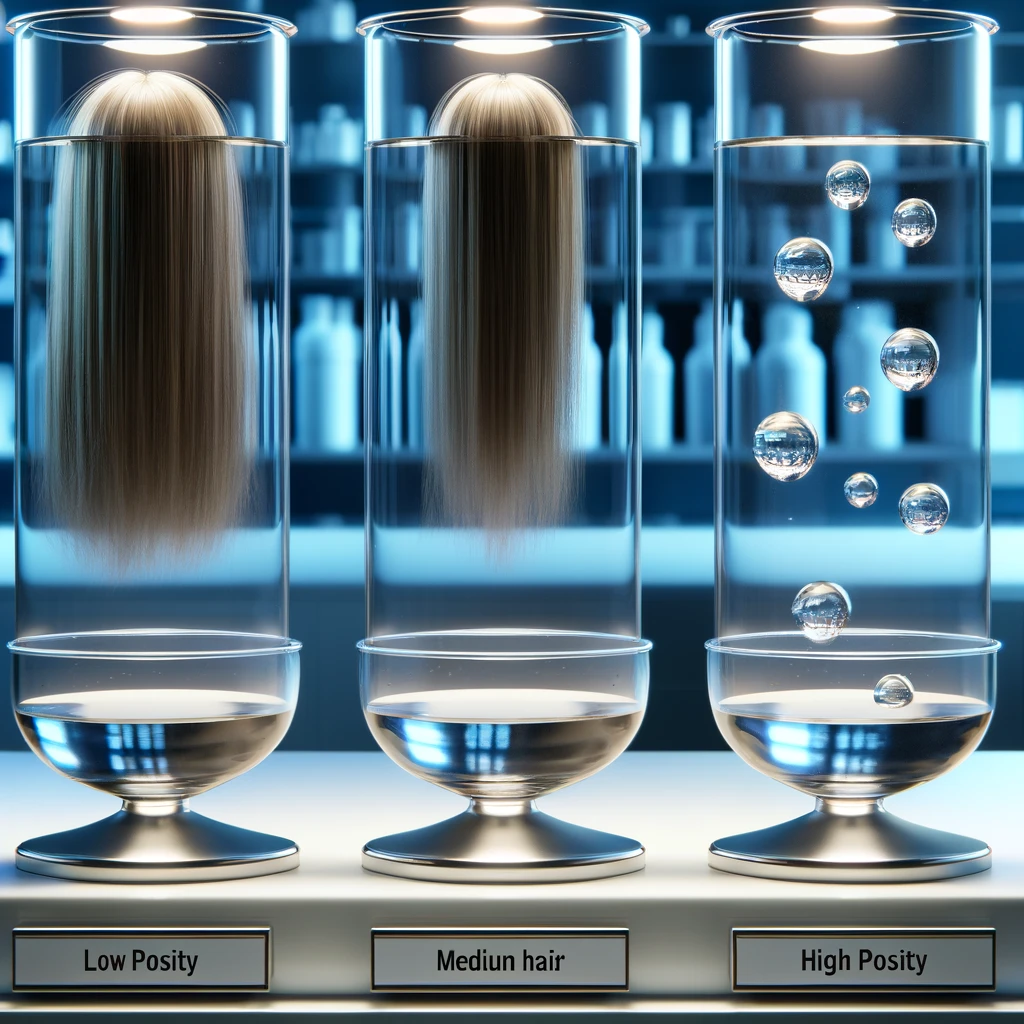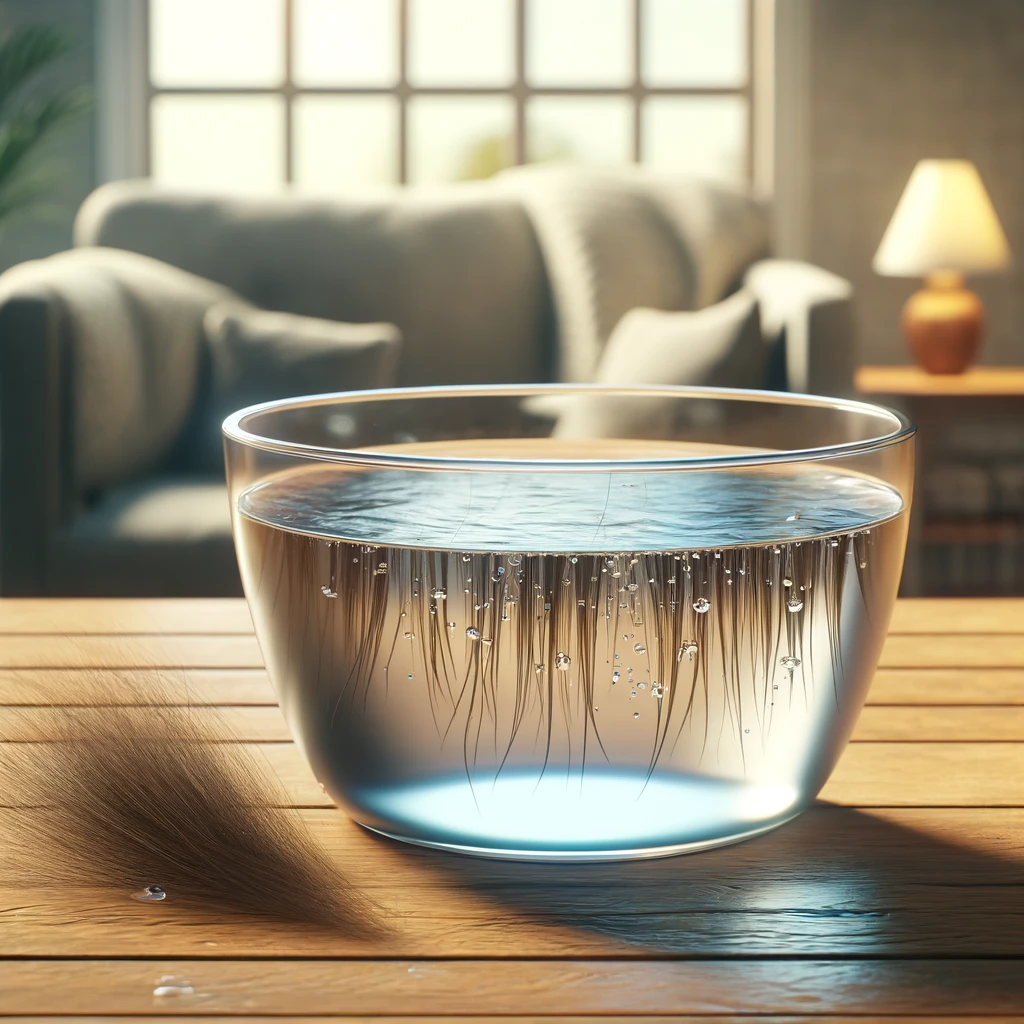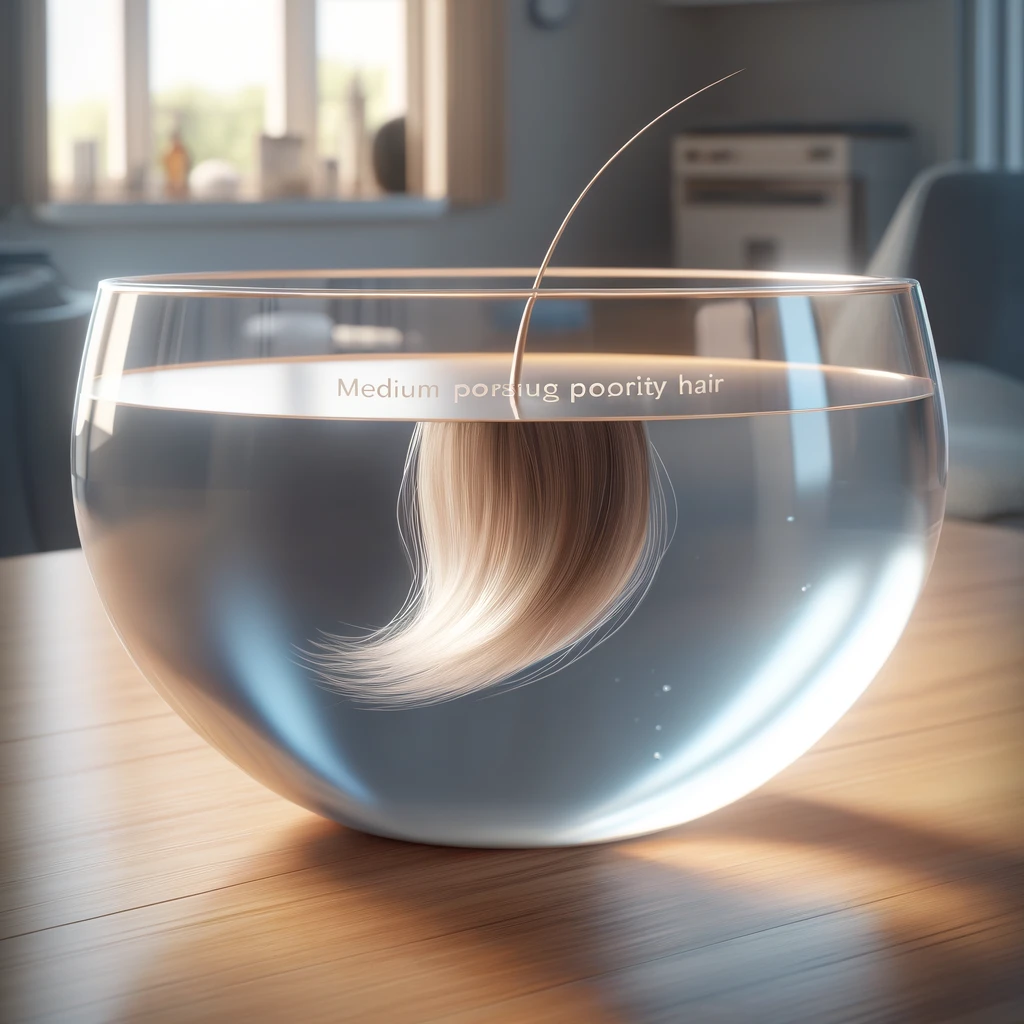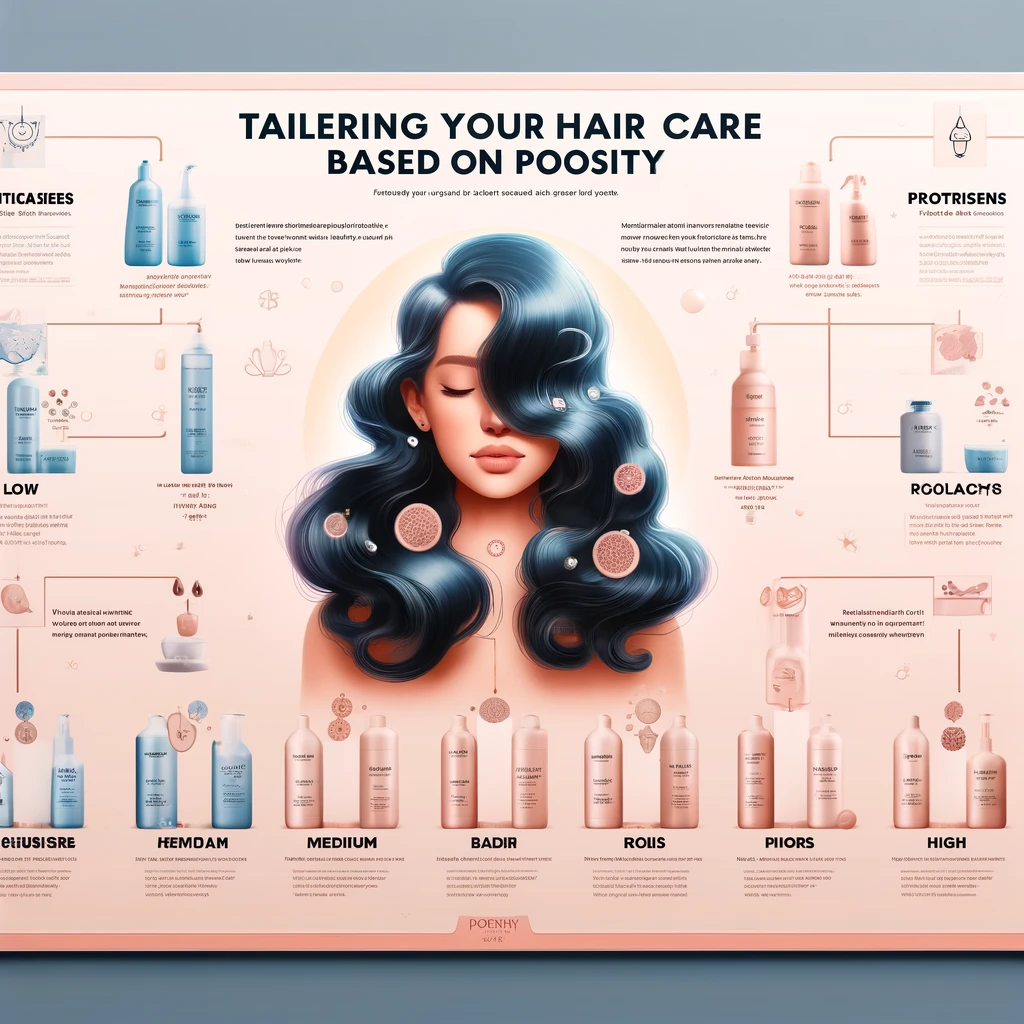
What is Hair Porosity?
Hair porosity refers to your hair’s ability to absorb and retain moisture and products. Simply put, it’s like the hair’s breathability. This characteristic of your hair plays a critical role in determining which products and care strategies will work best for you. Porosity is influenced by the hair cuticle, which can be imagined as the protective shingles on the roof of a hair shaft.

Types of Hair Porosity
Low Porosity:

Characteristics: Cuticles are tightly packed and closed, making it hard for moisture to penetrate but once it’s in, it’s locked in!
Challenges: Product build-up since products tend to sit on the hair rather than being absorbed.
Care Tips: Use heat (like warm water or a heated cap) to open up the cuticles during treatments. Opt for lightweight, liquid-based products.
Medium Porosity:

Characteristics: Cuticles are looser, allowing for easier moisture absorption and retention. This is the ‘Goldilocks’ porosity — not too hard, not too easy.
Challenges: Generally low maintenance, but can shift toward higher or lower porosity with damage or over-treatment.
Care Tips: Regular conditioning treatments and protein treatments as needed to maintain health.
High Porosity:

Characteristics: Cuticles are widely spaced or damaged, which allows for easy moisture absorption but also easy loss.
Challenges: Tends to get frizzy and dry quickly, and is often damaged by chemicals or environmental factors.
Care Tips: Heavy creams and oils to seal in moisture, regular deep conditioning, and protein treatments to strengthen the hair.
How to Determine Your Hair Porosity
The Float Test: This is a simple DIY test you can do at home. Just follow these steps:
- Take a few strands of clean hair from your brush or comb.
- Fill a glass with room temperature water.
- Drop the hair strands into the glass.
- Wait for about 2-4 minutes.
Observations:
If the hair sinks immediately: High porosity.
If the hair floats about midway or sinks slowly: Medium porosity.
If the hair stays floating on the surface: Low porosity.
Note: This test isn’t foolproof. Factors like oil on your hair or even water temperature can affect results. For a more accurate assessment, consider consulting a haircare professional.
Tailoring Your Haircare Based on Porosity

Low Porosity Tips:
Heat treatments to open cuticles.
Avoid heavy products that can cause build-up.
Medium Porosity Tips:
Regular moisturizing and occasional protein treatments to keep your hair in balance.
High Porosity Tips:
Use anti-humectants in humid climates to prevent frizz.
Seal in moisture with heavy oils after hydrating.
Conclusion: Embrace Your Unique Hair Type
Knowing your hair porosity isn’t just about choosing the right products; it’s about embracing your hair’s natural character and giving it what it needs to shine. Whether your hair drinks up everything you put on it or resists even the richest of moisturizers, there’s a perfect hair care regimen out there for you. Dive into understanding your hair, and watch it transform into its healthiest, happiest version.
Remember, great hair doesn’t happen by chance. It happens by understanding and taking proper care of your porosity!
I hope this guide helps you on your journey to optimal hair care! If you have any more questions or need further details, feel free to ask. Happy styling!

